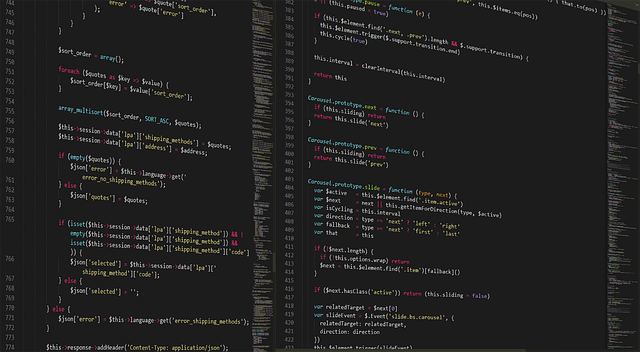Market Overview at a Glance
This month, the crypto market hit another stretch of turbulence—but not without signs of strength. Total market cap churned within a tight range, signaling caution from both bulls and bears. Bitcoin hovered between $59K and $64K, while Ethereum lagged slightly, briefly dipping below $3,000 before recovering. The two giants showed resilience, but neither sparked a definitive directional move.
Among the major altcoins, Solana saw one of the sharper swings—posting a 14% drop mid-month before retracing to finish almost flat. Cardano and Avalanche tracked sideways. Memecoins like DOGE and PEPE had brief rallies, but the buzz faded fast. As usual, volatility came in waves—driven more by macro narratives and regulatory headlines than on-chain events.
Sentiment-wise, there’s no clean consensus. Fear & Greed indexes leaned neutral to cautious. On-chain activity in staking and DeFi suggested long-term holders aren’t fleeing, but new money hasn’t flooded in either. It’s a holding pattern, with traders waiting for a macro green light—possibly inflation data, ETF approval moves, or stablecoin regulation—to kickstart momentum either way.
In short: the market’s alive, but not thriving. Volatility is low-key, conviction is tepid, and this might be crypto’s version of quiet before the next wave.
Regulatory Shifts and Legal News
Regulators didn’t take a vacation this month. The U.S. SEC kept the pressure on, serving fresh subpoenas and hinting at more aggressive oversight of DeFi protocols. Several enforcement actions zeroed in on unregistered securities and off-chain reporting practices. Message received: if you’re building in the U.S., compliance is no longer optional—it’s a survival tactic.
Across the Atlantic, the EU pushed ahead with MiCA implementation. The framework is finally starting to bite, with new registration requirements for exchanges and tighter controls on stablecoins. For European-based platforms, the clock’s ticking to get their paperwork—and infrastructure—in order.
Meanwhile, APAC regulators are playing two different games. Japan and South Korea rolled out clearer crypto exchange rules, signaling pro-innovation stances. But China remains hands-off publicly while investing heavily in blockchain infrastructure behind closed doors. The contrast is sharp, but the trend is global: governments are reshaping the rails while trying to avoid killing the train.
What this means for traders and builders: the regulatory fog isn’t lifting, but the outlines are becoming clearer. Jurisdiction shopping is back in style, and DeFi platforms blending KYC with decentralization may become the new middle ground. Everyone’s watching how enforcement plays out—and how much it stifles or enables the next wave of adoption.
Institutional Moves That Shaped the Month
Big money is no longer sitting on the sidelines. In the past month, several heavyweight institutions made decisive gestures toward crypto. BlackRock continues to double down, actively pushing forward on its Bitcoin ETF application, while Fidelity is quietly expanding its digital asset services for clients. Standard Chartered just launched a crypto custody platform. These aren’t test balloons—they’re strategic plays.
There’s also a noticeable uptick in ETF chatter. With Bitcoin spot ETF applications piling up, regulators have been steadily warming to the idea, or at least playing less cold. This signals a broader institutional turn from speculation to structure. When compliance-heavy firms start laying foundation stones, markets adjust.
For retail investors, it means two things: more legitimacy and more competition. The guardrails are coming up. That creates confidence, but it also levels the playing field in ways that might not favor early movers. Institutional behavior might not move fast, but it moves with weight. When these firms commit, they tend to stay. Keep your eyes on the volume and who’s behind it—it’s not just Reddit threads anymore.
Noteworthy Project Updates and Launches
It’s been a heavy month for core crypto projects, both legacy and upstart. Ethereum led the charge with an update that improves gas efficiency and preps the network for further scalability. No full-on Merge moment this time, but foundational upgrades are stacking up. The roadmap to sharding is still in motion, and validators are watching closely.
Bitcoin, meanwhile, saw renewed buzz after a soft fork proposal stirred debates. It’s not live yet, but it’s meant to enhance privacy and smart contract potential—something critics say has been lacking. In classic Bitcoin fashion, the community is split. No surprise there.
In altcoin land, a few lesser-known names got loud. Starknet rolled out a major upgrade with improved composability features, ApeChain announced a partnership with Animoca Brands, and Solana bounced back from a high-profile outage with an emergency patch. Not all wins were clean—some high-flying tokens saw nose dives after too much hype and not enough delivery. Still, it’s worth noting a pattern: projects with actual utility are pulling away from the noise.
Call it a cleanup month. Noise filtered out. Signals a bit clearer.
Macroeconomics and Global Impact
Crypto didn’t move on hype alone this month. It moved on oil prices, interest rate whispers, and war headlines. Inflation data played tug-of-war with investor confidence, especially in the U.S., where even a soft decimal shift in CPI reports stirred reactions across Bitcoin and Ethereum charts. The Fed’s ongoing dance with rate hikes kept traders on edge—hawkish tones led to risk-off sentiment, pulling capital out of volatile assets like crypto.
Commodities shook the table too. Spiking oil prices tightened liquidity; gold saw inflows, while crypto saw caution. Meanwhile, ongoing geopolitical flashpoints—think Ukraine, the Middle East, or rising tensions in Taiwan—added turbulence. Every flare-up brought uncertainty, and in a market that hates ambiguity, that means volatility.
These aren’t tangential storylines—they’re now core to crypto’s daily mood swings. Global economics and politics have officially taken the wheel.
For deeper context on how these macro forces are moving prices, check out How Global Events Are Influencing Cryptocurrency Prices.
Security and Scams: What Got Exposed
This month was a reality check: even in a maturing crypto landscape, security gaps still invite chaos. The standout breach came from Orbit Bridge, which lost over $80 million after attackers exploited vulnerabilities in cross-chain messaging. It wasn’t the only hit—smaller leaks and social engineering attacks targeted both individuals and lightly guarded DeFi protocols. Many of these unfolded quietly, buried in transaction logs until losses were too large to ignore.
The takeaway hasn’t changed, but it bears repeating: custody matters. If you’re not using hardware wallets or multi-sig setups, you’re trusting systems that have proven they can fail. Exchanges are waking up, too. Binance and Coinbase rolled out enhanced withdrawal alerts and AI-based fraud detection to get ahead of suspicious behavior. Wallet providers like MetaMask and Ledger are increasing transparency around permissions and pushing out faster patch cycles.
No setup is bulletproof, but in 2024, vigilance isn’t optional. Assume the worst can happen—and set up your defenses accordingly.
Community Buzz and Cultural Trends
If you want to know where crypto is really headed, forget the charts for a minute—watch the Discords, Reddit threads, and Twitter timelines. The noise is often messy, but buried in the chaos are cultural signals that move markets. This month, several grassroots narratives gained traction across platforms, stoking community energy even during price dips.
Twitter (sorry, X) saw a resurgence in micro-thread storytelling—quick, meme-heavy breakdowns of emerging tokens, remixed with inside jokes and alpha leaks. Top Reddit subs like r/CryptoCurrency and r/ethfinance were alive with debates over staking yields, regulatory risk, and the new crop of meme coins making absurd claims (and sometimes delivering big gains).
Meanwhile, Discord servers morphed into war rooms for holders of specific NFTs and smaller cap projects. These weren’t casual hangouts—they were strategy forums, cross-chain collab spaces, and early alerts on pump cycles. Culture moves fast here, and those who track the tone—not just the data—often get the first whiff of what’s next.
NFTs, long left for dead by headlines, are proving stubborn. Not because of floor prices, but because of what they represent: culture. Proven communities like Pudgy Penguins and Milady (yes, still) continue to churn micro-trends, merch drops, and even IP licensing plays. Value, more than ever, comes from identity—being early, being in-the-know, and staying plugged into the faster-than-news rhythm of crypto’s cultural layer.
What to Watch Next Month
There’s plenty on the calendar that could rattle—or rally—the markets. First up, keep an eye on major governance votes from protocols like Arbitrum and MakerDAO. These votes aren’t just noise; they’re shaping how treasuries are deployed and how decentralized governance evolves. A yes or no could shift millions in liquidity.
Expect notable token unlocks from several high-profile projects, including Aptos and Sui. These events tend to create short-term sell pressure—smart traders know to watch the unlock schedules like hawks.
On the legal side, two U.S. court rulings tied to ongoing SEC lawsuits are expected to come down. Depending on the outcome, we may see clearer lines drawn around what counts as a security. Also, the EU’s MiCA regulation hits another milestone soon—bringing new clarity, and new hoops for projects operating in Europe.
Strategically, follow the capital. VC funds are cooling on wild bets and leaning into infrastructure and real-world use cases again. We’re seeing renewed interest in stablecoin utilities, layer-2 scaling tech, and real world asset (RWA) tokenization platforms. This isn’t the hype cycle—it’s a pivot toward functionality.
Stay sharp. The next month won’t be quiet.
Final Thoughts
The Market Has Changed—Adapt or Miss Out
The crypto landscape in 2024 is a far cry from the hype cycles of yesterday. Rapid shifts in technology, regulation, and investor behavior mean that what worked last year might not work today. The only constant? Change.
- Volatility remains, but strategies must evolve
- Blind optimism won’t cut it—data and critical thinking matter
- Long-term sustainability is overtaking quick-win hype
Why Staying Informed Matters More Than Ever
In a fast-moving space, missing a single policy update or platform shift can create significant risk. Smart investors and builders keep their ears to the ground and ask hard questions.
- Follow multiple reliable sources—not just social media
- Question narratives, especially ones that promise guaranteed gains
- Understand—not just react to—macro and micro shifts
The Truth: Crypto Isn’t Dead—It’s Maturing
Despite bear market fatigue, the industry is far from fading. What we’re seeing is a transition: from speculation-driven to value-driven engagement. Tech is improving, oversight is growing, and use cases are expanding.
- Growth is happening at the infrastructure and protocol level
- More serious actors are entering the space, from developers to institutions
- Communities remain passionate, focused, and adaptive
Bottom line: Crypto isn’t going away—it’s growing up. Those who stay informed, flexible, and strategic will have the best chance of keeping up—and leading.

 Founder & Editor-in-Chief
Founder & Editor-in-Chief
